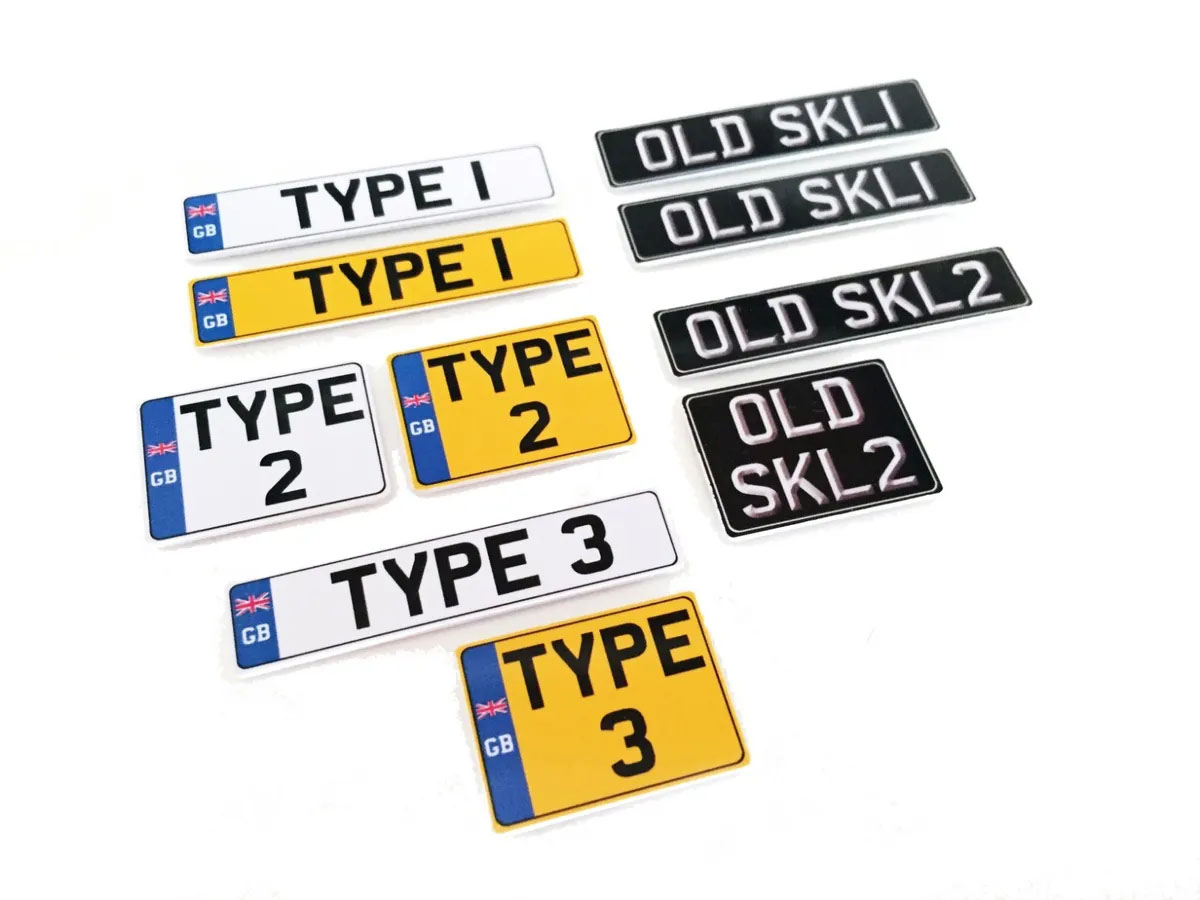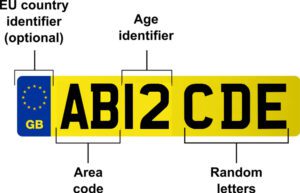Number plates are displayed on all motor vehicles in the UK as a means of official identification. But they also contain codes and details that reveal useful information if you know what to look for. This guide will explain how to decipher the area codes, age identifiers and other characteristics that make up the UK number plate system.
Layout of Number Plates
All number plates in the UK follow a standard format consisting of three main elements:
-

Local Memory Tag – 1 or 2 letters representing the local area where the vehicle is registered.
- Age Identifier – 2 numbers indicating the year the vehicle was registered.
- Random Numbers/Letters – 3 random letters and up to 4 random numbers unique to each vehicle.
Additional small details like the EU flag and BS AU 145 standards symbols may also be shown. Number plates can only use certain fonts and sizes approved by the Driver and Vehicle Licensing Agency (DVLA).
Local Memory Tags
The first part of the number plate is the Local Memory Tag, which consists of 1 or 2 letters identifying the local DVLA office where the vehicle owner applied to register it.
Some examples include “Y” for York, “DG” for Dumfries, and “B” for Birmingham. Recently, areas have begun running out of letter combinations, so now more obscure double letters like “ZR” for Stoke and “WK” for Wakefield are being introduced.
Checking the Local Memory Tag can give you an indication of where in the UK the vehicle is originally from. However it’s important to note that plates stay with the owner, not the car. So if someone moves to a new area, their plate will retain the old location identifier.
The full list of current DVLA local office codes is extensive, with over 100 identifiers in use. Some of the more obscure ones include “BU” for Truro, “WV” for Eastbourne, “SM” for Sutton Coldfield, “NE” for Workington, “MK” for Milton Keynes, “PR” for Preston and “PO” for Portsmouth.
So for anyone well-versed in the area codes, the Local Memory Tag offers a quick way to glean the general region where a vehicle is first registered. Although not an exact science, it provides clues for narrowing down the origins of a vehicle.
It’s also worth noting that the DVLA adds new area letters periodically as existing supplies get used up. For example, “AU” was recently introduced for Carlisle and “BN” for Horsham. So the Local Memory Tag codes do evolve over time as required.
Age Identifier
The age identifier section gives an indication of when the vehicle was first registered. From 2001 onwards, this consists of 2 numerical digits representing the year. For example, “08” means the car was first registered sometime in 2008.
However, the year is not precise – the registration period actually runs from March to February, so an “08” plate could be anywhere from March 2008 to February 2009.
Before 2001, number plates displayed the year with a letter instead, changing yearly. This system ran in order from “A” in 1983 through “Y” in 2001. For example a “K” plate is from 1992-1993.
So while not an exact science, the age identifier number gives a rough guide to how old a vehicle is, which can be useful background information.
The current age identifier system has been in place since September 2001 when the “51” registrations commenced. Since then, the two digit year code has steadily progressed from “51” through to “22” for the current year. Looking at a plate, most UK drivers can quickly work out if a vehicle is brand new or 20+ years old based on the identifier.
It’s important to note that the age identifier reflects first registration rather than manufacture date. For some models, there can be a time lag between manufacture and appearing on UK roads. Also, imported used cars will carry the age of first non-UK registration.
So in summary, while age identifiers don’t provide a definitive date of manufacture, they remain a helpful guide for narrowing down the vintage of a vehicle. When combined with other clues like the model and condition, drivers can make reasonable assumptions about a car’s age.
Random Numbers and Letters
The remainder of the number plate consists of 3 random letters followed by up to 4 random numbers. When a vehicle is first registered, this unique sequence of letters and numbers is randomly generated by the DVLA computer system.
Once issued, the number plate remains with that vehicle permanently, or until the owner legally changes it. So this element does not provide any information about the vehicle itself, but simply provides a personalised ID for that particular car.
There are some restrictions on certain letter/number combinations. For example “I” and “Q” are excluded as they could be confused with other characters. Swear words and politically sensitive combinations are also barred.
A few limited “reserved” numbers like “1 UK” can be purchased or bid for, subject to DVLA approval. This allows owners to get a personalised plate. But regular plates are randomly assigned.
Specialist and Personalised Plates
Beyond the standard plates, there are certain specialist versions and personalised options:
- Silver/Black Plates – Cars over 40 years old can register for historic black and silver number plates.

- Personalised Plates – Owners can legally change plates by purchasing an available number from the DVLA for £250. This allows custom phrases or meaningful numbers.
- Prefix/Suffix Plates – Add a personal prefix or suffix to a standard plate for £26 per year.
- Imported Plates – Cars brought in from abroad can retain their original foreign plates on the rear.
- Dateless Plates – No year identifier displayed for cars over 40 years old.
So in summary, UK number plates follow a clear system that provides useful information about where the car is from and how old it is – if you know how to crack the codes. And the unique sequence of random letters and numbers gives each vehicle its own personal ID. So, while you might see them on our roads every day and might not have known how number plates work, now you do!





Recent Comments